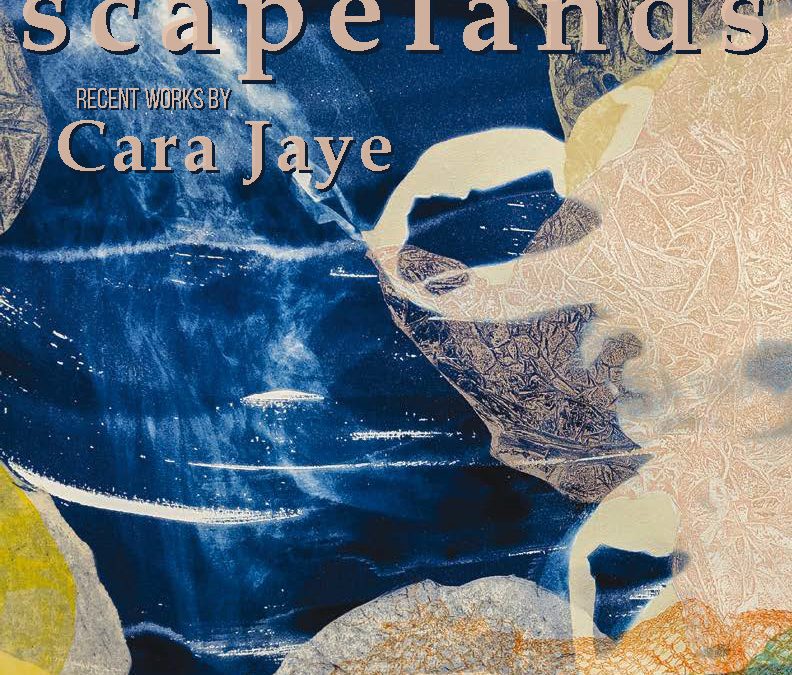April 22 – May 15
Reception: Friday, May 3, 6-8pm
Location: Backspace Gallery, Art Lofts, 111 N Frances St, Madison, WI
Follow the cat paws to find the gallery.
Scapelands, by visiting artist Cara Jaye from Washington state, is currently on view at last exhibition of the academic season of the Backspace Gallery. Jaye’s work blends photography, drawing, and printmaking into beautiful large format drawings in panels this time centering around issues involving climate change, and seeks to investigate these problems and scenarios being played out by human impact on the natural environment. Witnessing these events in person and in the media brings with it a sense of individual guilt and culpability.
Looking at land and water in an inverted perspective in the wake of global climate change and widespread plastic pollution. All of the work is made of monoprint, or cyanotype and monoprint in combination, each piece is a unique work and requires that the paper pass through the printing press in multiple stages as layers of imagery are accumulated on the page.
This exhibition features two works that are in response to King Tides, exceptionally high tides that happen several times a year, and with these come flooding in some coastal areas. Since King Tides lift the water level higher than a typical high tide, they offer a glimpse into the future of what we might expect with sea level rise.
Average daily water levels are rising along with the oceans. As a result, high tides are reaching higher and extending further inland than in the past. King tides preview how sea level rise will affect coastal places. As time goes by, the water level reached now during a king tide will be the water level reached at high tide on an average day.[1]
Sea levels are expected to rise and coastal areas will change dramatically in the coming decades. This will require increased risk management and planning. Washington State has already seen a rise of about 8 inches in the last century, and most projections give a 50/50 chance that we could see at least another foot by 2070 – about 50 years from now. And of course, sea level rise won’t stop in 2070, but is instead projected to accelerate through 2100 and beyond.[2]
Footnotes:
[1] https://www.epa.gov/cre/king-tides-and-climate-change
[2] http://www.wacoastalnetwork.com/wcrp-documents.html
Sources:
Miller I., et. al. 2018. Projected sea level rise for Washington State – a 2018 assessment. A collaboration of Washington Sea Grant, University of Washington Climate Impacts Group, Oregon State University, University of Washington, and US Geological Survey. https://www.researchgate.net/publication/329670416_Projected_Sea_Level_Rise_for_Washington_State_-_A_2018_Assessment
Dahlman and Lindsey. 2018. Climate change: ocean heat content. https://www.climate.gov/news-features/understanding-climate/climate-change-ocean-heat-content
Carrington, Damian. 2017. Plastic fibres found in tap water around the world, study reveals. The Guardian. https://www.theguardian.com/environment/2017/sep/06/plastic-fibres-found-tap-water-around-world-study-reveals
Surfers Against Sewage UK website, 2019. Plastic Pollution Facts and Figures. https://www.sas.org.uk/our-work/plastic-pollution/plastic-pollution-facts-figures/

